Top 10 Must-Visit Craft Village in Vietnam: A Deeper Dive
Embark on a captivating journey with us as we delve into the Top 10 Must-Visit Craft Village in Vietnam: A Deeper Dive. From the delicate touch of potters in Bat Trang Craft village to the vibrant colors of Dong Ho folk paintings, we’ll unveil the heart of Vietnamese craftsmanship. So, buckle up and let’s explore the soul of Vietnam, one exquisite creation at a time!
Top 10 Must-Visit Craft Villages in Vietnam: A Deeper Dive
Immerse yourself in Vietnam’s vibrant culture by exploring these top 10 must-visit craft villages! Each location boasts unique specialties, passed down through generations, offering a glimpse into Vietnam’s artistic heritage.
1. Bát Tràng Pottery Village (Ha Noi)
- Location: Just outside Hanoi, easily accessible by day trip.
- Products: High-quality ceramics, from delicate teacups and bowls to intricate vases and decorative pieces.
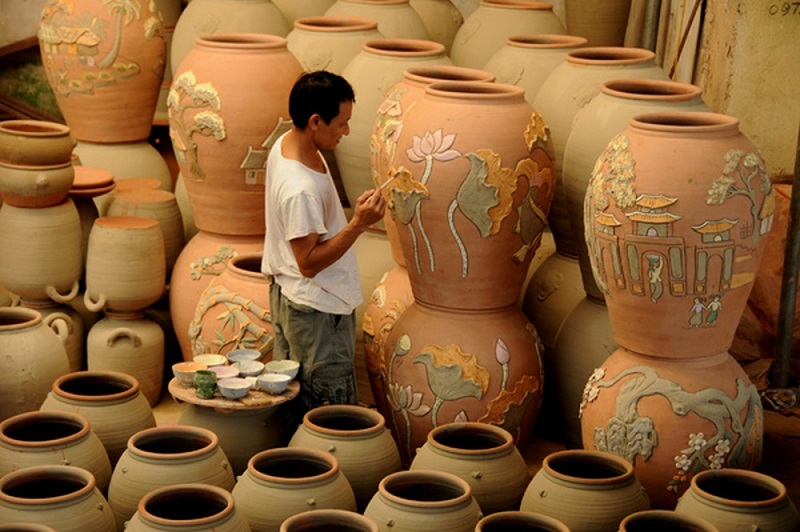
- Historical Background: Over 700 years of pottery-making tradition. Legend tells of a traveling Chinese monk who taught villagers the art of ceramics.
- Most Interesting: Witness the entire pottery-making process, from shaping clay on a potter’s wheel to the final firing in traditional kilns. Try your hand at making your own piece of pottery!
2. Đông Hồ Folk Painting Village (Bac Ninh)
- Location: Near Bac Ninh city, about an hour from Hanoi.
- Products: Unique folk paintings on special dó paper, depicting scenes from mythology, folklore, and daily life.

- Historical Background: Dating back to the 17th century, Dong Ho paintings were traditionally used for celebrations and rituals.
- Most Interesting: Observe the meticulous process of carving wooden blocks, mixing natural dyes, and meticulously printing each layer to create these captivating artworks.
3. Thái Bình Conical Hat Craft Village (Thai Binh Province)
- Location: Chu Dien village in Thai Binh province, southeast of Hanoi.
- Products: The iconic conical hat (nón lá), a symbol of Vietnam, made from palm leaves and bamboo frames.
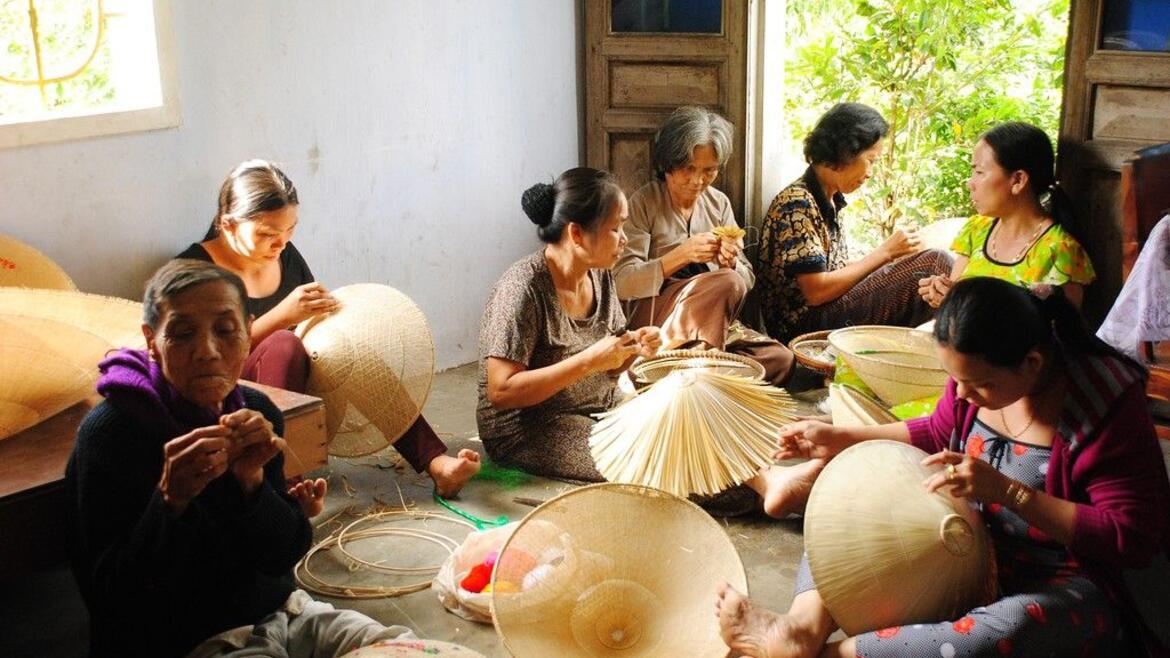
- Historical Background: The conical hat has been a Vietnamese staple for centuries, offering protection from the sun and rain.
- Most Interesting: Learn about the different styles and sizes of conical hats used throughout Vietnam. Try your hand at weaving your own hat – a fun and rewarding experience!
4. Y Brocade Weaving Village (Dak Lak)
- Location: Central Highlands, Dak Lak province. Immerse yourself in the rich culture of the indigenous Y bro people.
- Products: Exquisite brocade fabrics, crafted using natural dyes and featuring geometric patterns and symbolic motifs.

- Historical Background: Brocade weaving is an integral part of Y bro culture, traditionally used for clothing and ceremonial purposes.
- Most Interesting: Witness the intricate techniques used by Y bro weavers, creating beautiful and culturally significant fabrics. You can find a variety of brocade products to take home, supporting the local community.
5. Kim Lan Inlaid Lacquerware Craft Village (Ha Noi)
- Location: Just outside Hanoi, offering a glimpse into the meticulous art of lacquerware.
- Products: Stunning decorative pieces and functional items like jewelry boxes and trays, adorned with inlaid mother-of-pearl, eggshell, and other natural materials.
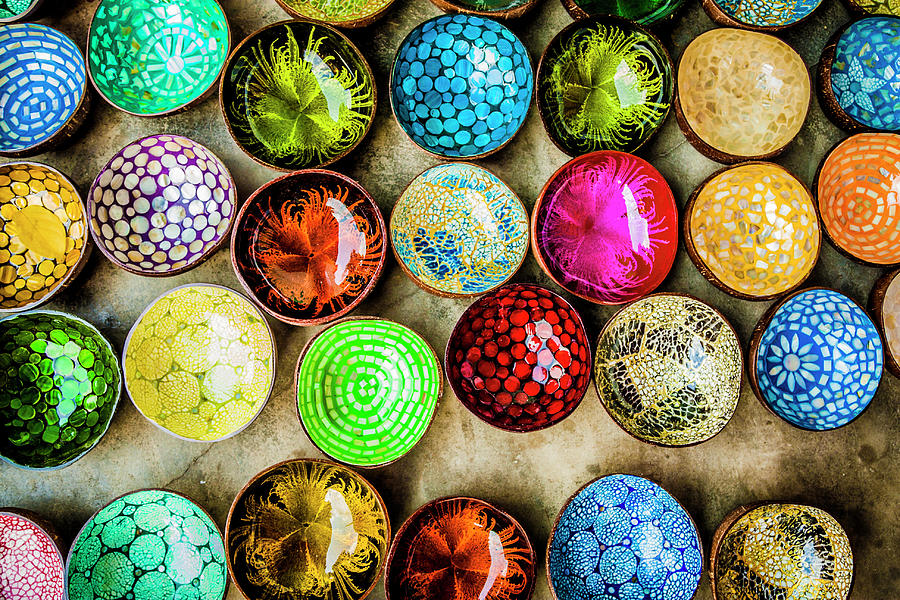
- Historical Background: Lacquerware has been a Vietnamese art form for centuries, with Kim Lan village specializing in the intricate technique of inlay.
- Most Interesting: Witness the painstaking process of building up layers of lacquer and inlaying each piece with meticulous detail. Kim Lan lacquerware is a true testament to Vietnamese patience and artistic skill.
6. Hoi An Ancient Town – Silk Village (Quang Nam Province)
- Location: Nestled within the charming UNESCO World Heritage town of Hoi An, combining historical significance with vibrant silk production.
- Products: Luxurious silk fabrics in various colors and patterns, used for clothing, scarves, and home décor.
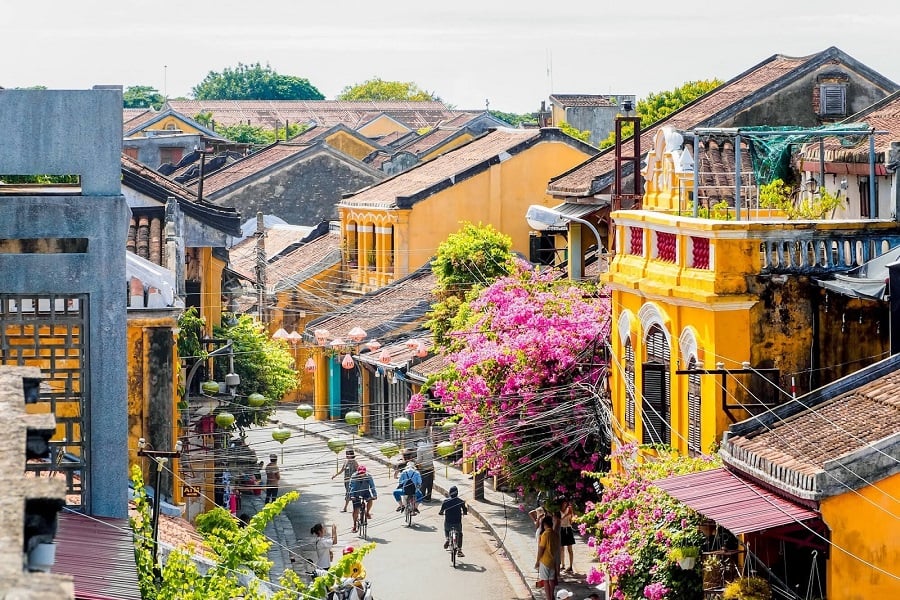
- Historical Background: Hoi An has been a center for silk production for centuries, with a long history of trade with China and Japan.
- Most Interesting: Explore workshops where the entire silk production process unfolds, from extracting silk threads from cocoons to dyeing and weaving them into beautiful fabrics.
7. Non Nuoc Stone Carving Craft Village (Da Nang)
- Location: Near Da Nang city, offering a chance to witness the transformation of stone into art.
- Products: Intricate statues, decorative items, and even religious icons, all meticulously carved from stone.
 Non Nuoc Stone Carving Craft Village (Da Nang)
Non Nuoc Stone Carving Craft Village (Da Nang)
Historical Background: Non Nuoc has a long tradition of stone carving, dating back to the Cham people who once inhabited the area.
- Most Interesting: See skilled artisans wielding their chisels and hammers with precision, breathing life into the stone. You might even find a unique piece to take home as a souvenir.
8. Bau Truc Pottery Village (Ninh Thuan Province)
- Location: Coastal village in Ninh Thuan province, known for its unique Cham pottery tradition.
- Products: Cham pottery, a distinct style characterized by geometric patterns, bold colors, and a focus on functionality.
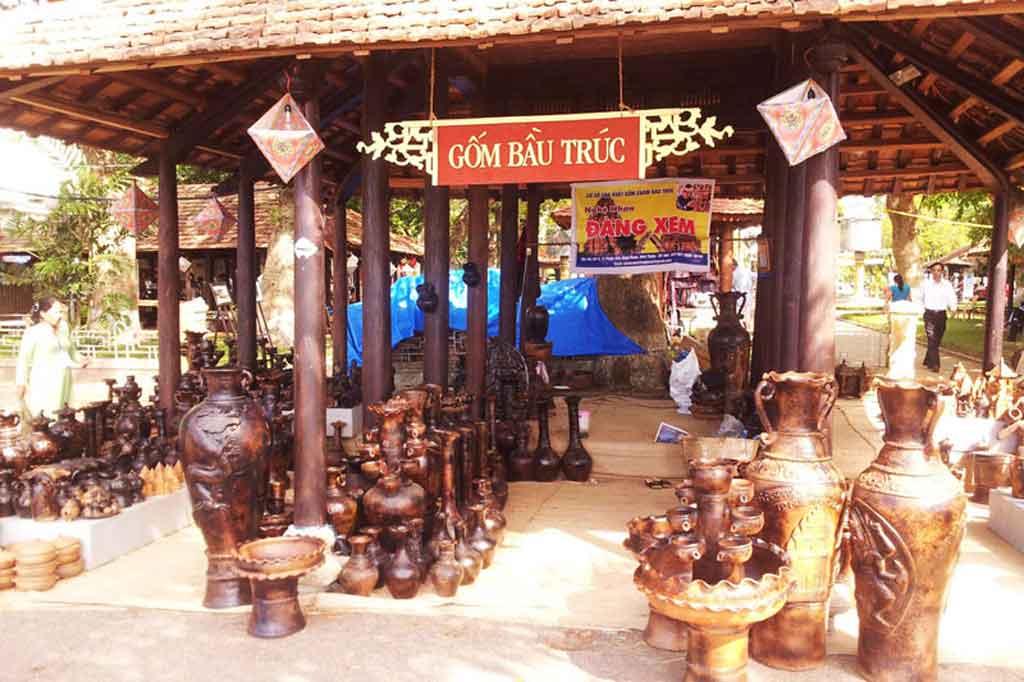
- Historical Background: The Cham people, a former Indianized kingdom, were known for their skilled pottery-making techniques. Bau Truc village continues this legacy, preserving the unique Cham style.
- Most Interesting: Discover the ancient techniques used to create Cham pottery, often involving hand-coiling and paddling methods. You might even witness the traditional firing process using wood-fueled kilns.
9. Van Phuc Silk Craft Village (Ha Noi)
- Location: Just outside Hanoi, a historical center for silk production known for its high-quality fabrics.
- Products: Luxurious silk clothing, scarves, and home décor items, featuring intricate embroidery and traditional patterns.

- Historical Background: Van Phuc has been a silk-weaving village for over 1,000 years, supplying silk to Vietnamese royalty and nobility.
- Most Interesting: Witness the entire silk production process, from raising silkworms to weaving the final product. Van Phuc is also known for its traditional silk embroidery techniques.
10. My Tho Coconut Candy Village (Tien Giang Province)
- Location: Located in the Mekong Delta near My Tho city, offering a taste of local delicacies.
- Products: The iconic Vietnamese coconut candy (kẹo dừa), made from fresh coconut milk and sugar, available in various flavors and textures.
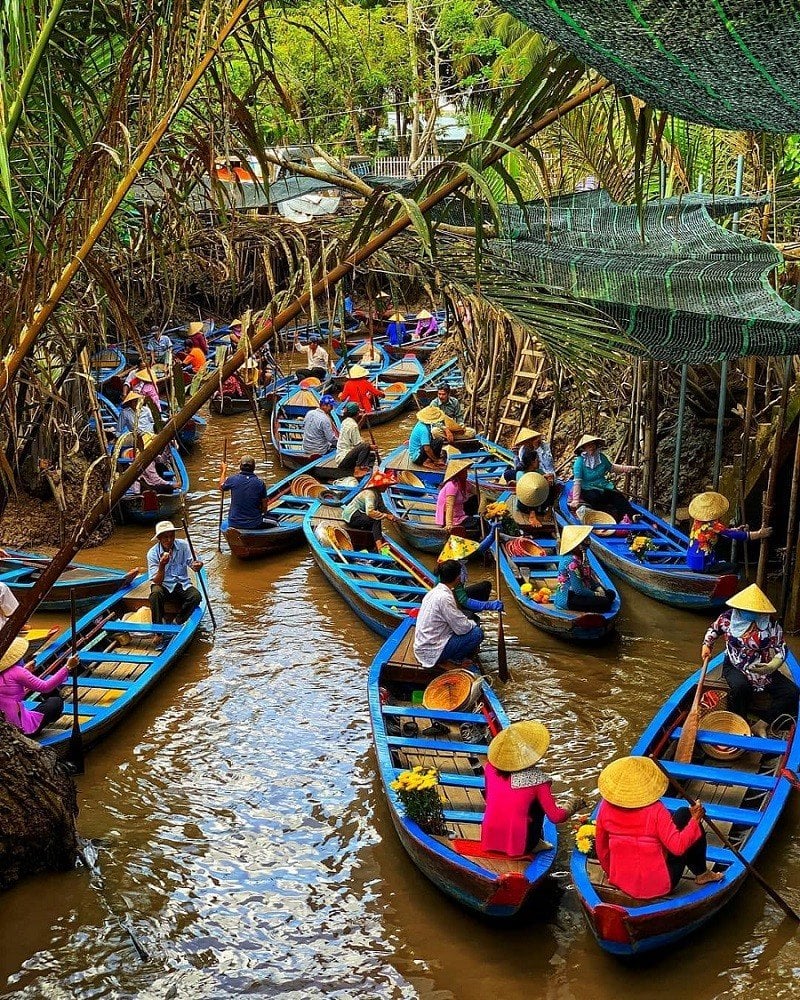
- Historical Background: Coconut candy production has been a local specialty in My Tho for generations, utilizing the abundance of coconuts grown in the Mekong Delta.
- Most Interesting: Learn about the traditional methods of making coconut candy, often involving boiling and caramelizing coconut milk over open fires. Witness the transformation of simple ingredients into a delicious and unique treat.
These ten craft villages represent just a glimpse into the rich tapestry of Vietnamese handicraft traditions. Each location offers a unique experience, allowing you to witness age-old techniques firsthand, support local artisans, and bring home a piece of Vietnamese culture.
See also:
